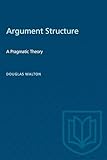Argument Structure : A Pragmatic Theory / Douglas Walton.
Material type: TextSeries: HeritagePublisher: Toronto : University of Toronto Press, [1996]Copyright date: ©1996Description: 1 online resource (318 p.)Content type:
TextSeries: HeritagePublisher: Toronto : University of Toronto Press, [1996]Copyright date: ©1996Description: 1 online resource (318 p.)Content type: - 9780802071378
- 9781487574475
- 168
- BC177.W3214 1996
- online - DeGruyter
| Item type | Current library | Call number | URL | Status | Notes | Barcode | |
|---|---|---|---|---|---|---|---|
 eBook
eBook
|
Biblioteca "Angelicum" Pont. Univ. S.Tommaso d'Aquino Nuvola online | online - DeGruyter (Browse shelf(Opens below)) | Online access | Not for loan (Accesso limitato) | Accesso per gli utenti autorizzati / Access for authorized users | (dgr)9781487574475 |
restricted access online access with authorization star
http://purl.org/coar/access_right/c_16ec
The current difficulty with using argument diagramming as a teaching tool in courses designed to help students think more critically and criticize arguments more effectively is that the students are not able to carry out these tasks in a confident and definitive way, so that they are sure they have the right answer. The reason for this is that the various tests used in logic textbooks to carry out these tasks are often highly variable and contradictory. In many cases, either no real criteria at all are given, or else those given do not yield clear answers. For example, the same argument might be identified as linked according to the test advocated in one textbook, but as convergent according to another. Some textbooks tests even give results that appear intuitively wrong to students. Douglas Walton provides a systematic survey, clarification, and assessment of the different tests currently being used to carry out the tasks involved in argument identification. He tests the tests themselves, and develops new methods for determining missing premises, for determining whether an argument is linked or convergent, and for deciding whether a given test of discourse contain an argument or not. The result is a clearly expressed theory of argument structure that yields a precise and consistent method of argument diagramming, making the technique much more useful and easily applicable. Suitable for courses in informal logic, critical thinking, argumentation, and logical reasoning, the book will also be of interest to those in the fields of speech communication, rhetoric, discourse analysis, and education.
Mode of access: Internet via World Wide Web.
In English.
Description based on online resource; title from PDF title page (publisher's Web site, viewed 01. Nov 2023)


